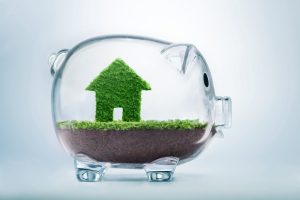If you are designing a new home, office, or commercial space, or you are simply trying to incorporate new elements into an existing property, it’s best to ensure that you are thinking sustainably. Gone are the days when you could use any old material not just because of fading trends but also because they have been revealed to be less than pleasant towards the environment. Even if you’re not one of those people who are exactly worried about the deterioration of the environment (though many studies and world events might steer you into believing the fact that global warming is a real threat), designing sustainably can save you a lot of energy costs and it can still look good.
Use a living wall
A lot of office interior designs are a great source of inspiration because they perfectly balance class, creativity, and sustainability. Often, you may even see a living wall incorporated seamlessly incorporated into the design. Alternatively, you could also use this as your highlight for any room.
A living wall is essentially a structure supported by your wall and is filled with natural greenery; hence it is “living.” It’s up to you what kind of plants you want to have on there, but most variations you’ll see are ferns, moss, succulents, fuchsia, and the like. This is a great visual piece for any visitor, and it’s a natural way to add some ventilation and improve air quality. Depending on where you install it, you can even use it for insulation or noise reduction.
Incorporate natural materials in your structural pieces
If you’re going to be putting in furniture, pillars, barriers, or semi-separators throughout, why not use natural elements that won’t hurt the environment with their construction? Reclaimed wood, stone, and other refurbished materials can be good options that can still be designed to fit the aesthetic you want to achieve. Studies have also proven how people feel more productive when they feel surrounded by natural elements in their environment. This could be because of the innate draw that humans have for such things. Still, you can easily achieve this with a combination of the materials said above, plants, and even incorporating some sounds of nature where possible.
Use the latest technology for your appliances
Whether you are making a residential or commercial space, you’ll want to get a tech that is as updated as you can get. This isn’t just to fit in with the latest tech design and functionality, but newer appliances, gadgets, and equipment tend to be built better in terms of efficiency. They are already created with energy conservation in mind, so they use less power while still looking good and likely being more future-proof than other options you might have in mind. It’s also more convenient if you can make use of smart systems that make everything interconnected and can even be manipulated to have presets that can go on lower power usage while giving you the sleek design you want.
Bring in that natural light

Why not save on lighting by using the power of natural light? The soft rays of the sun or the glimmer of the night outside can cast an amazing effect on your interior design, especially if you are strategic with your placement and design of your windows. With the right application, glass screams class, as garish as that phrase may sound. It’s a sustainable style choice because, during the day, at least, you won’t need to put up bright lights and turn on different fixtures to keep things visible.
You can even incorporate some solar power so that you rely on natural sunlight by day and run on solar-powered lights by night.
Digitize as much as you can
Sure, we may look back at the “old days” with nostalgia, but digitizing a lot of the stuff that gets done in your space can actually be more sustainable. This especially rings true in office spaces but applies to any place. There are too many items that have a single usage in them, which is why people produce so much waste. If you can get rid of paper and other unrecyclable items for the sake of going digital, then the earth will thank you for it. Of course, this is reliant on the wattage you produce with the electronics you make use of, so be mindful of that.
Aesthetically, this will lead to a lot less clutter and leave more room for a mindful design meant to elevate the space. Even in cooking space, an induction cooker is more environmentally-friendly and arguably more stylish than a large gas cooker. Often putting up signage? Get rid of that waste that constantly needs to be replaced and get some well-placed LED screens.
With just these changes, you can make an impact in more ways than one.






